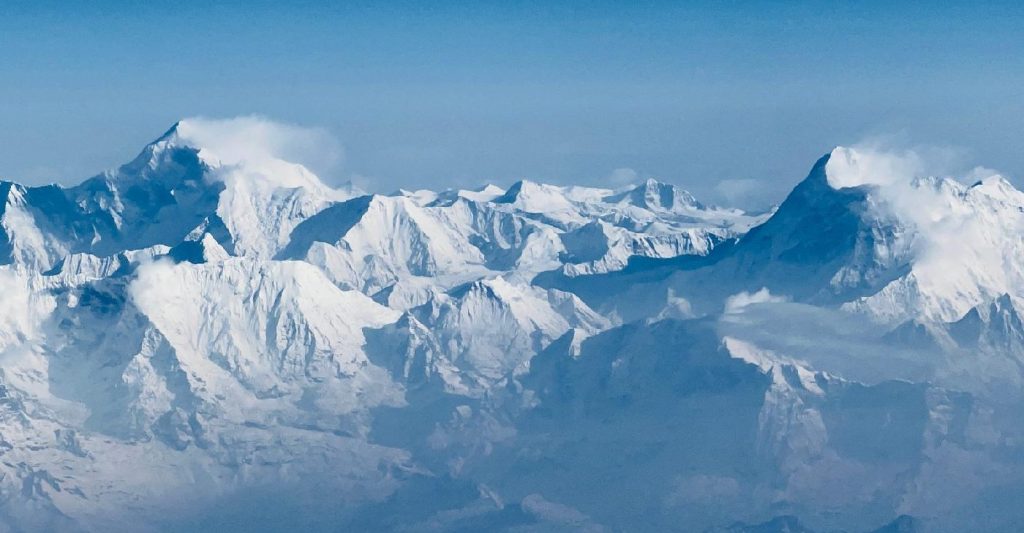
The Everest Region Trekking Guide starts here—taking you through one of the most awe-inspiring trekking destinations in the world. Home to Mount Everest (8,848 meters), this region offers more than just a glimpse of the highest peak on Earth. It presents a complete Himalayan experience filled with spectacular landscapes, authentic Sherpa culture, and unforgettable trails. Whether you’re aiming for Everest Base Camp or seeking tranquility at the Gokyo Lakes, this guide will help you prepare for your trek with all the essentials.
1. Everest Base Camp Trek: The Ultimate Trekking Adventure
The Everest Base Camp (EBC) Trek is the most popular route in the region, attracting adventurers from around the globe. It’s the heart of any Everest Region Trekking Guide.
Highlights:
- Flight to Lukla: Begin with an exciting mountain flight from Kathmandu to Lukla.
- Sherpa Villages: Walk through culturally rich villages like Namche Bazaar and Tengboche.
- Panoramic Mountain Views: Witness Mount Everest, Lhotse, Ama Dablam, and more.
- Everest Base Camp (5,364m): Stand at the foot of the world’s tallest mountain.
- Tengboche Monastery: A serene spiritual stop with views of Everest.
Best for: Experienced trekkers and adventure lovers looking to stand face-to-face with Everest.
2. Gokyo Lakes Trek: A Peaceful Alternative
The Gokyo Lakes Trek is a quieter and equally scenic journey within the Everest Region.
Highlights:
- Gokyo Ri (5,357m): Offers one of the best panoramic views of Mount Everest.
- Turquoise Lakes: Explore the stunning glacial Gokyo Lakes.
- Less Crowded Trails: A peaceful trail with fewer trekkers.
Best for: Nature lovers and those seeking a less crowded alternative to EBC.
3. When to Trek in the Everest Region
The best times for trekking in the Everest Region are:
- Spring (March to May): Blooming rhododendrons and stable weather.
- Autumn (September to November): Clear skies and excellent visibility.
Avoid monsoon (June–August) due to heavy rain, and winter (December–February) unless you’re prepared for extreme cold.
4. Trekking Challenges & Altitude Sickness
The Everest Region Trekking Guide wouldn’t be complete without addressing the challenges:
- Difficulty: Moderate to difficult, depending on the route.
- Altitude Sickness: Acclimatization is key. Symptoms include headaches, nausea, and fatigue. Stay hydrated, ascend slowly, and take rest days.
Our experienced guides are trained to monitor altitude-related symptoms and keep you safe throughout the journey.
5. Teahouse Experience & Local Cuisine
Trekking in the Everest Region means staying in teahouses—simple lodges run by locals offering basic amenities, hearty meals, and a warm place to rest. Popular dishes include:
- Dal Bhat (lentils, rice, and vegetables)
- Momos (dumplings)
- Sherpa stew
This adds cultural immersion to your trekking experience.
6. Permits and Essentials
To trek in the Everest Region, you need:
- Sagarmatha National Park Entry Permit
- TIMS Card (Trekkers’ Information Management System)
These are arranged by your trekking company or can be acquired in Kathmandu.
7. Why Choose Himalayan Circuit for Your Everest Trek
At Himalayan Circuit, we specialize in personalized treks across Nepal, including expert-crafted Everest Region trekking itineraries. Here’s what we offer:
- Tailored routes for EBC, Gokyo, and more
- Acclimatization-focused planning
- Experienced, licensed guides and porters
- Easy permit support
- Comfortable and authentic teahouse stays
Plan Your Everest Region Trekking Adventure Today
Whether you’re planning your first trek or your next great Himalayan journey, this Everest Region Trekking Guide gives you the foundation to get started. Reach out to Himalayan Circuit to start crafting your unforgettable Everest adventure.
No Comments yet!